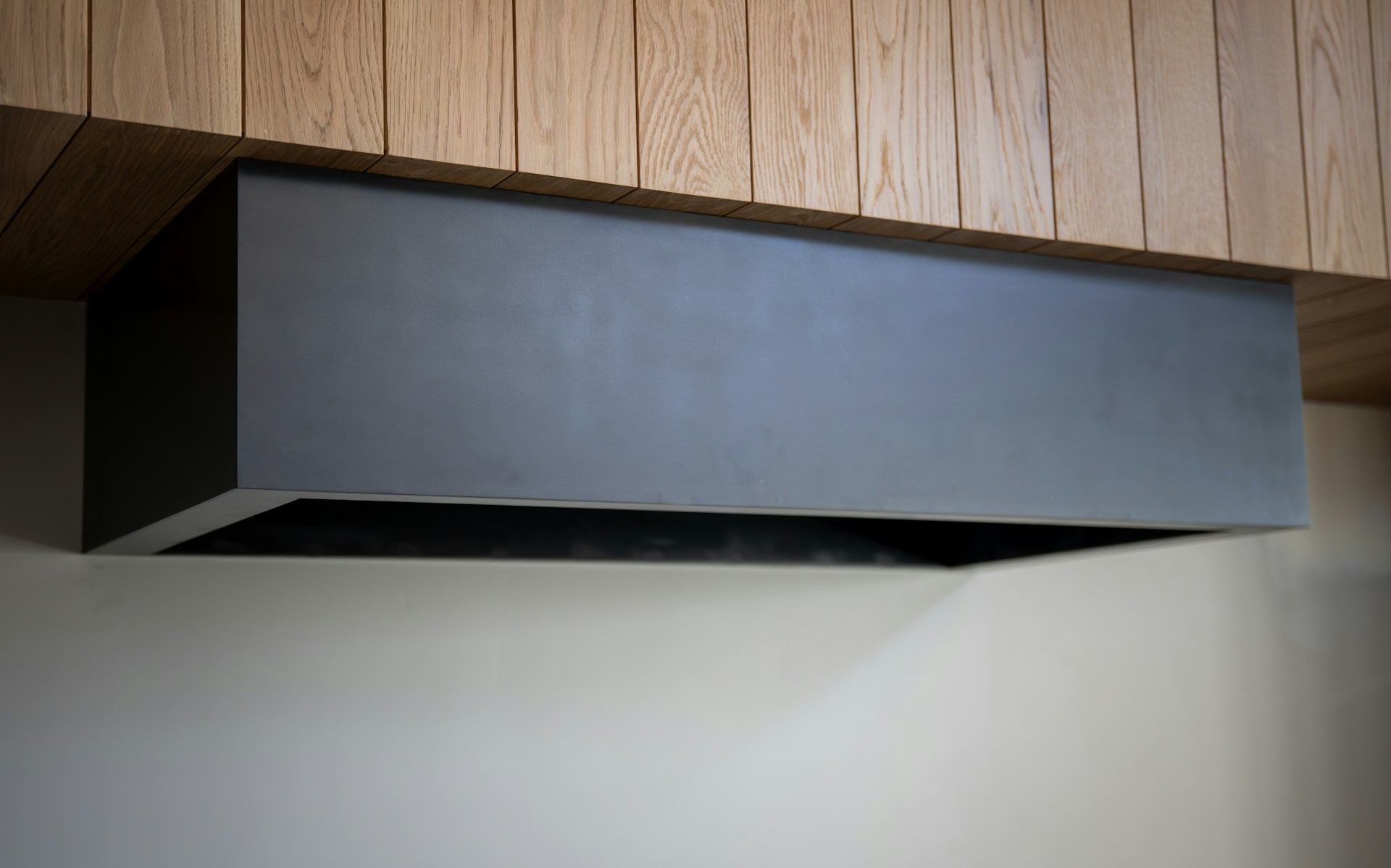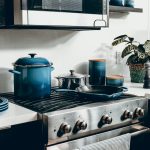Choosing the right hood for your kitchen is crucial in ensuring efficient cooking. Modern range hoods are designed to eliminate smoke, odour, and grease that accumulate from regular cooking. By extracting the air pollutants, these hoods maintain the kitchen’s cleanliness and make your cooking experience more pleasant. However, with the variety of range hoods available in the market, you might find it challenging to pick the perfect one. This guide will walk you through the necessary factors to consider when choosing an effective range hood to prevent grease buildup.
Understanding the Basics: Types of Range Hoods
Before delving into the details, it’s crucial to understand the different types of hoods you may encounter. The two main types you’ll come across are ducted and ductless range hoods.
Topic to read : What are the benefits of double-walled espresso cups for coffee enthusiasts?
Ducted hoods, also known as vented hoods, are connected to a ductwork system that channels the cooking air outside the kitchen. On the other hand, ductless hoods, or recirculating hoods, filter and circulate the air back into the room. Ducted hoods are generally more effective at venting, but require complex installation and can be costlier. Ductless hoods are easy to install and more affordable, but their filtration system may not be as efficient.
Understanding the difference between these two types is a stepping stone in determining which range hood will better serve your kitchen’s needs.
Also to read : What are the benefits of double-walled espresso cups for coffee enthusiasts?
The Importance of Ventilation Power
When choosing a range hood, the power of the ventilation system is a key factor to consider. The ventilation power, often measured in cubic feet per minute (CFM), determines how much air the device can vent out in a minute. A higher CFM implies the hood can handle more air and effectively remove grease and other pollutants from the cooking area.
For a typical household kitchen, a range hood with a CFM of between 100 and 250 is adequate. However, for those of you with larger kitchens or who often cook foods that produce a high amount of smoke or grease, a hood with a higher CFM will be necessary.
Remember, choosing a range hood with a powerful fan doesn’t necessarily mean it will be the quietest. So, consider the noise level – measured in sones – as well. Typically, a range hood operating at full speed should not exceed 7 sones.
The Role of Filters in Range Hoods
Filters are an essential component of a range hood. They trap the grease and other particles, preventing them from building up in your kitchen. There are two main types of filters: grease filters and charcoal filters.
Grease filters are found in both ducted and ductless hoods. They are generally made of aluminium or stainless steel and can be cleaned easily. On the other hand, charcoal filters are exclusive to ductless range hoods. They help to neutralize the odours before re-circulating the air back into the kitchen.
Remember to clean or replace your filters regularly for optimal hood performance. A saturated grease filter will not only degrade the performance of the hood but also pose a fire risk.
Size and Positioning of Range Hoods
The size of your range hood should correspond with the size of your cooking range. Ideally, the hood should cover the entire cooking surface to capture all the smoke and grease effectively. A hood that is too small will not cover the entire range, and a hood that is too large may obstruct movement in the kitchen.
Positioning also plays a crucial role in the performance of the hood. The optimal height for a range hood is between 24 to 30 inches above the stovetop. However, this may be adjusted depending on your height and comfort.
Maintenance and Cleaning: Prolonging the Life of Your Range Hood
Maintaining your range hood is paramount to ensuring its longevity and efficiency. Regular cleaning will not only prevent grease buildup but also prolong the life of the fan and its components. Both ducted and ductless hoods require regular cleaning; however, ductless hoods may require more frequent cleaning due to the absence of ductwork.
For regular maintenance, clean the filters monthly using a degreaser. For deep cleaning, most range hoods come with detachable parts that you can clean separately. Always refer to the user manual to understand the cleaning procedure for your specific model.
Choosing the ideal range hood for your kitchen requires a clear understanding of your cooking habits, kitchen size, and personal preferences. By considering the type, ventilation power, filter system, size, positioning, and maintenance needs, you can select a range hood that keeps your kitchen clean and grease-free. Remember to regularly maintain your hood for efficient performance and a pleasant cooking experience.
Exploring the Role of Materials in the Efficacy of Range Hoods
The material employed in the construction of a range hood can significantly impact its performance and durability. The most common material used is stainless steel due to its high durability, easy maintenance, and elegant appearance that complements a variety of kitchen designs.
Stainless steel range hoods offer high resistance to heat, corrosion, and stains, making them ideal for heavy-duty cooking. Their sleek and polished surface simplifies the cleaning process, helping you maintain a pristine kitchen environment. A stainless steel vent hood, thus, serves as a practical and stylish addition to both residential and commercial kitchens.
Apart from stainless steel, other materials like copper, tempered glass, and cast stone are also used in making range hoods. Each material brings unique benefits and aesthetic appeal, but they may require special care and maintenance. Therefore, consider the maintenance demands of the material and its compatibility with your kitchen décor when choosing your range hood.
Assessing the Role of Hood Systems in Commercial Kitchens
Commercial kitchens, such as those in restaurants or food trucks, often involve heavy-duty cooking and generate considerable amounts of smoke, grease, and heat. Therefore, these kitchens require powerful exhaust hoods to ensure optimal air quality and a safe working environment.
Commercial hood systems, notably larger than residential ones, are designed to handle the intense demands of commercial cooking. These exhaust hoods, often made of robust stainless steel, comprise high-capacity exhaust fans to effectively eliminate grease and smoke.
When choosing a commercial kitchen hood, consider factors such as the size of the kitchen, the type of cooking appliances used, and the volume of cooking. Your hood system should be large enough to cover all cooking appliances. A well-chosen exhaust hood will not only prevent rooftop grease accumulation but also comply with local fire and health codes.
Conclusion: Making the Right Choice for Your Kitchen
Choosing the right range hood for your kitchen is an investment in the quality and safety of your cooking environment. Whether you have a small residential kitchen or a large commercial one, the key lies in understanding your specific requirements and matching them with the right type of range hood.
For domestic kitchens, the choice between ducted and ductless range hoods largely depends on your kitchen layout, cooking habits and budget. For commercial kitchens, a robust stainless steel hood system with high CFM is essential to handle the heavy grease and smoke output.
Regardless of the type of kitchen, regular cleaning and maintenance of your range hood is crucial. Not only does it prevent grease buildup, but it also ensures the longevity of your hood and maintains a healthy air quality in your kitchen.
Remember, a well-chosen and well-maintained range hood makes for a pleasant, clean, and safe cooking experience. Choose wisely, clean regularly, and cook freely without worrying about smoke or grease buildup.






